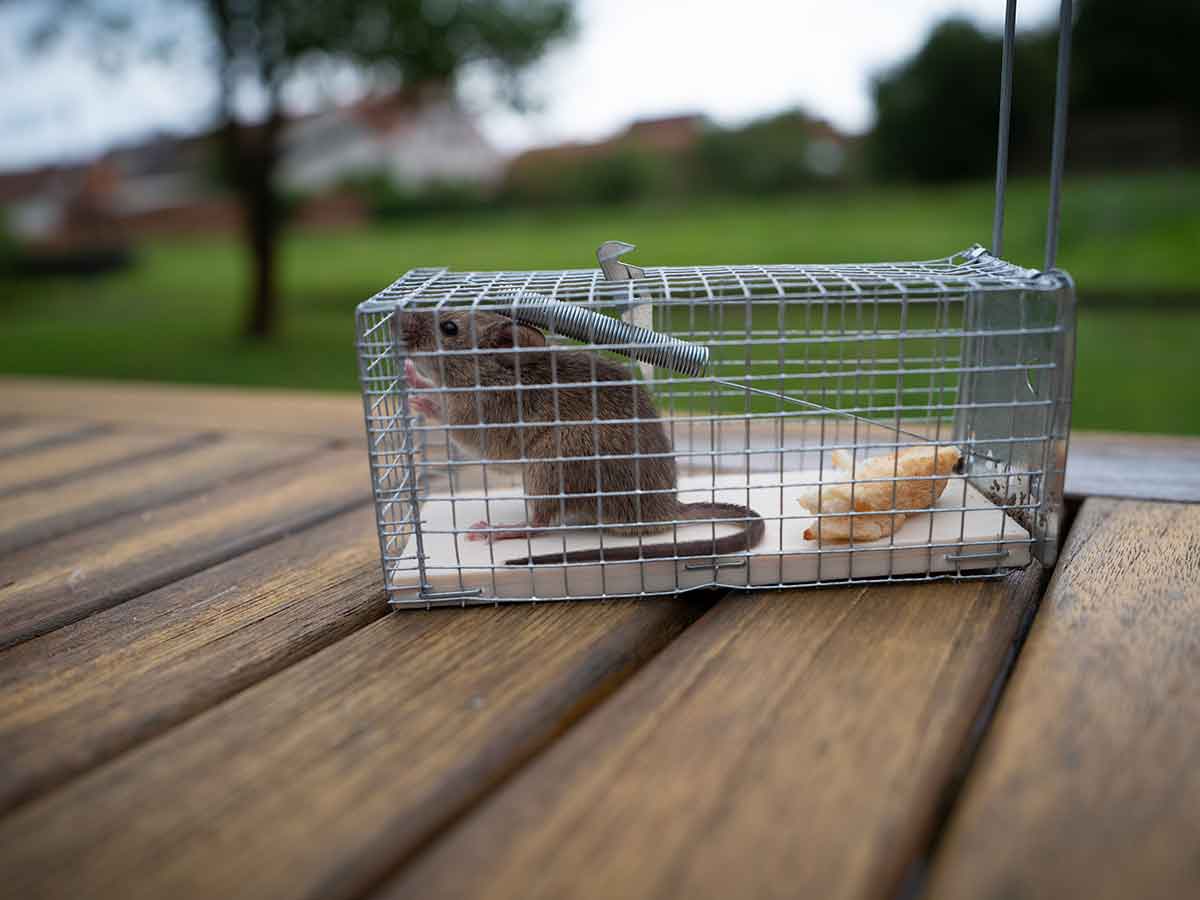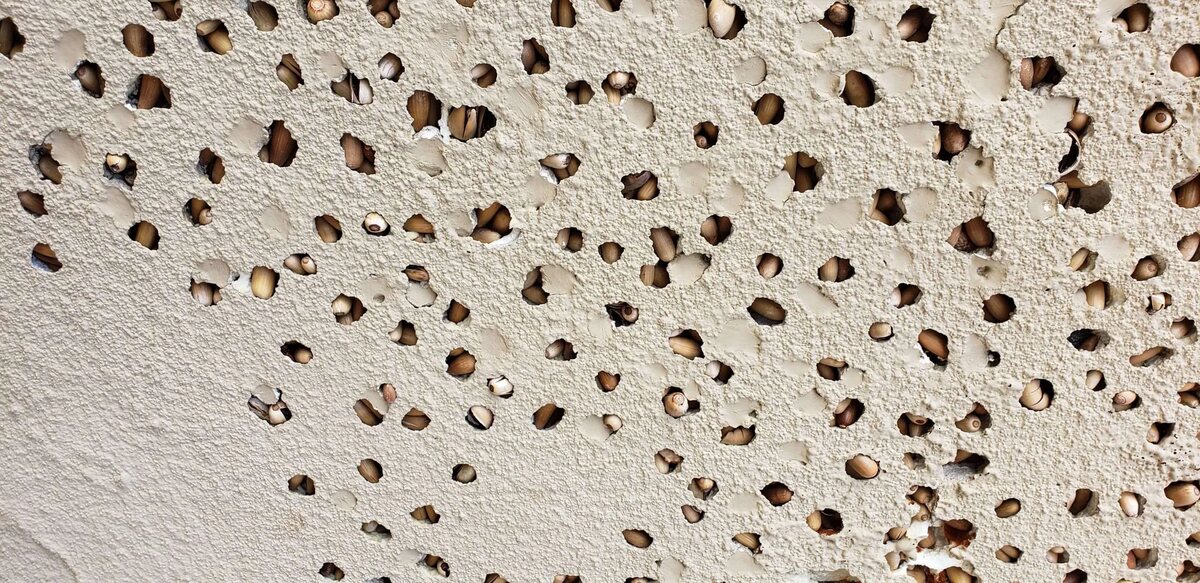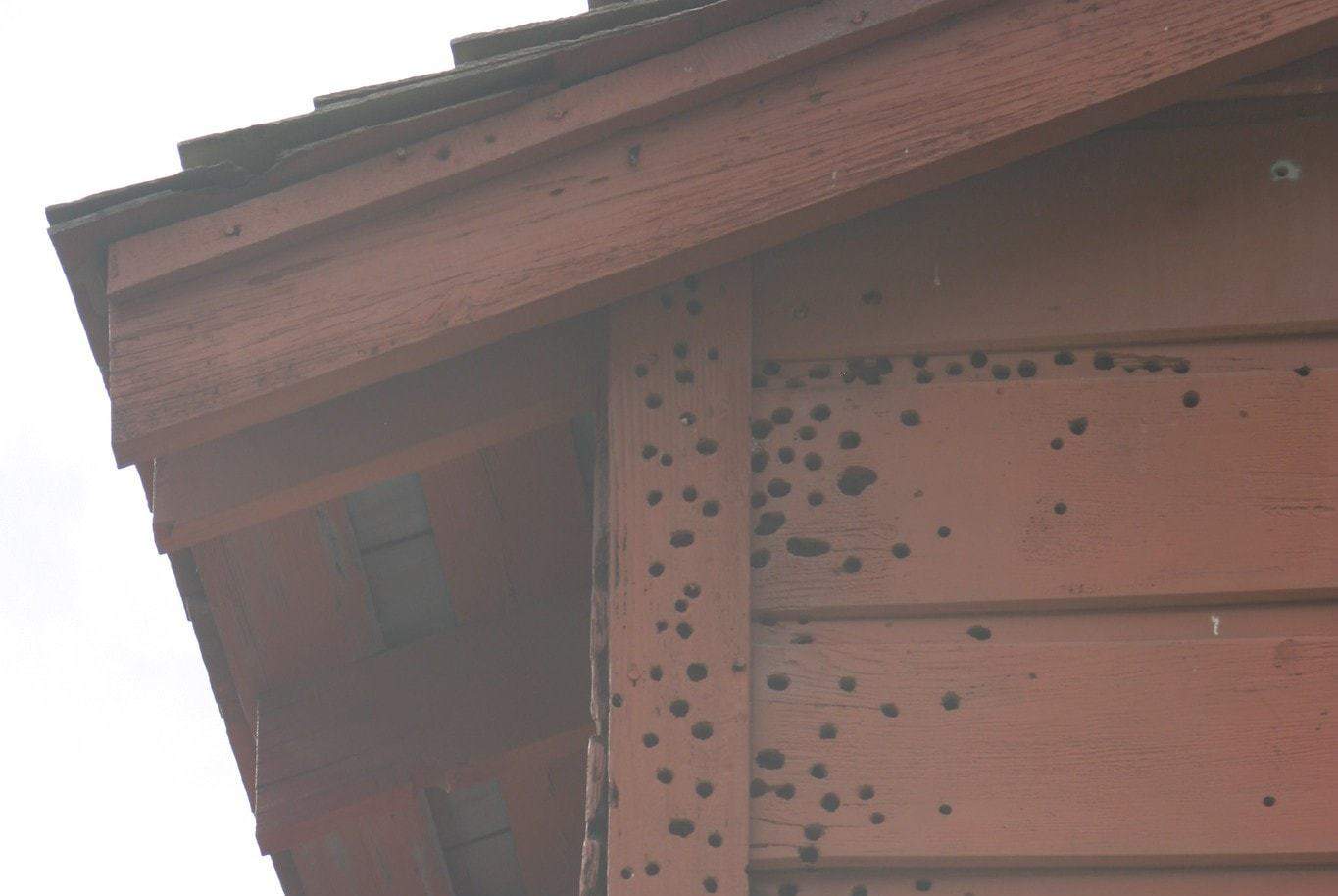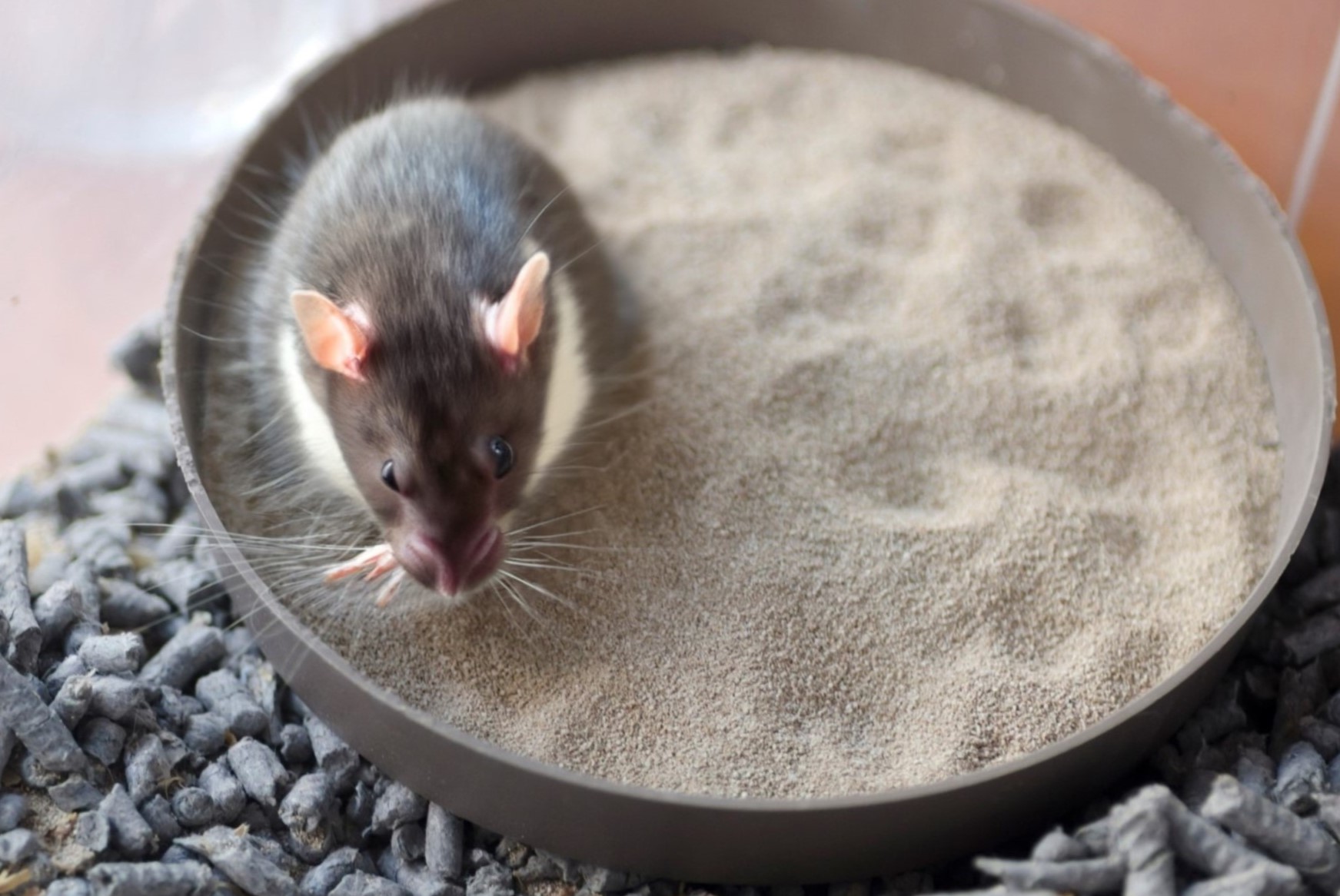Home>Furniture>Outdoor Furniture>How To Deter Rats From The Patio


Outdoor Furniture
How To Deter Rats From The Patio
Modified: October 19, 2024
Learn effective ways to deter rats from your patio and protect your outdoor furniture. Discover tips and tricks to keep your outdoor space rodent-free.
(Many of the links in this article redirect to a specific reviewed product. Your purchase of these products through affiliate links helps to generate commission for Storables.com, at no extra cost. Learn more)
Introduction
When it comes to enjoying your outdoor space, few things are as frustrating as discovering a rat infestation on your patio. Not only can rats pose a health risk with their droppings and potential for spreading disease, but they can also damage your furniture, plants, and overall enjoyment of your outdoor area.
The key to deterring rats from your patio is to implement effective prevention measures and to address any existing infestation as soon as possible. In this article, we will guide you through the process of identifying rat infestations, keeping the patio clean, securing entry points, using rat repellents, implementing traps and baits, and maintaining regular monitoring and maintenance.
By following these steps, you can ensure that your patio remains a peaceful and rat-free retreat where you can relax and entertain friends and family.
Key Takeaways:
- Keep your patio clean and secure entry points to deter rats. Regularly inspect for signs of infestation, remove food sources, and seal cracks and holes to maintain a rat-free outdoor space.
- Use natural or commercial repellents and traps to control rat populations. Implement safe baiting techniques and regular maintenance to ensure a peaceful and enjoyable patio.
Read more: How To Deter Wasps From A Patio
Identifying Rat Infestation
Before you can effectively deter rats from your patio, you need to determine whether or not you have a rat infestation. Here are some signs to look out for:
Signs of Rat Infestation
- Droppings: Rat droppings are a telltale sign of infestation. They are typically small, dark, and cylindrical in shape.
- Gnawed objects: Rats have a need to chew and may leave behind chewed wires, furniture, or other objects.
- Urine stains: Look for dark and smelly stains on surfaces, as rats will frequently urinate in their territories.
- Footprints: Rats often leave greasy footprints along their regular paths, which may be visible on smooth surfaces.
- Nests: Rats create nests using shredded material like paper or fabric. These nests are typically hidden in dark corners or behind furniture.
- Noises: Rats are nocturnal creatures, so if you hear scratching, squeaking, or scurrying sounds at night, it could indicate an infestation.
- Sightings: Seeing live rats or dead rats near your patio is a clear sign of an infestation.
Inspection of the Patio Area
Once you have identified some of these signs, it’s important to thoroughly inspect your patio area to determine the extent of the infestation. Look for any entry points, such as cracks in walls, gaps under doors, or openings around utility pipes. Pay attention to areas where food or garbage may be accessible to rats, such as outdoor dining areas or storage spaces.
Take note of any areas where rats may be nesting or hiding, such as dense shrubbery, woodpiles, or piles of clutter. Make sure to inspect furniture and cushions for any signs of rat damage or nesting materials.
By conducting a thorough inspection, you can gain a better understanding of the severity of the infestation and identify specific areas that need to be addressed in order to effectively deter rats from your patio.
Keeping the Patio Clean
Maintaining a clean and tidy patio is crucial in deterring rats. By removing potential food sources and properly managing garbage, you can significantly reduce the attractiveness of your patio to these unwanted visitors.
Read more: How To Deter Bees From A Patio
Removing Food Sources
Rats are opportunistic scavengers, and they are attracted to food left out in the open. To prevent attracting rats to your patio, follow these guidelines:
- Do not leave food or pet food outside. Securely store all food in airtight containers.
- Clean up spilled food and crumbs immediately.
- Regularly clean barbecue grills and remove grease buildup.
- Avoid feeding outdoor birds or squirrels near your patio, as the spilled birdseed can attract rats.
- Keep compost bins securely closed to prevent rats from accessing food scraps.
Proper Garbage Management
Rats are notorious for rummaging through garbage for food. To avoid creating an irresistible buffet for these pests:
- Use bins with tight-fitting lids to prevent rats from accessing the garbage.
- Double bag any food waste to mask odors and make it less enticing to rats.
- Regularly empty and clean the garbage bins to eliminate any smells that may attract rats.
- Avoid leaving bags of garbage outside overnight. Instead, dispose of them in sealed bins immediately.
By diligently removing food sources and implementing proper garbage management practices, you can significantly reduce the chances of rats being attracted to your patio. A clean and food-free environment will make your patio uninviting to these unwanted pests.
Securing Entry Points
One of the most effective ways to deter rats from your patio is to secure all possible entry points. By sealing cracks and holes and installing door sweeps and weather stripping, you can prevent rats from gaining access to your outdoor space.
Sealing Cracks and Holes
Rats are adept at squeezing through small openings, so it’s important to inspect your patio for any cracks or holes that may serve as entry points. Focus on areas where utility pipes, cables, or wires enter your patio, as rats can exploit these gaps.
Use a caulking gun or expandable foam to seal any visible cracks or gaps in walls, foundations, or flooring. Pay close attention to areas where different materials meet, as rats can easily slip through these junctions.
Additionally, inspect your patio for any holes or gaps in fencing or screens. These openings should be promptly repaired or patched to prevent rats from gaining access.
Read more: How To Deter Frogs From Patio
Installing Door Sweeps and Weather Stripping
Doors that do not fit tightly or have gaps underneath provide easy access for rats. Install door sweeps to create a barrier at the bottom of the door, effectively closing off any potential entry points.
Weather stripping can also be applied around the edges of doors and windows to create a tight seal, preventing rats from slipping through small openings.
Regularly inspect and maintain door sweeps and weather stripping to ensure that they are in good condition and effectively keeping rats out.
By taking the necessary steps to secure entry points, you can create a fortified barrier that will make it extremely difficult for rats to invade your patio. This proactive approach will go a long way in deterring rats from accessing your outdoor space.
Using Rat Repellents
In addition to securing entry points, utilizing rat repellents can provide an extra layer of protection for your patio. These repellents work by deterring rats from approaching or entering the area. There are both natural and commercial options available.
Natural Repellents for Rats
Using natural substances as rat repellents can be a safe and effective way to keep these pests away from your patio. Some natural repellents that are known to deter rats include:
- Peppermint oil: Rats dislike the strong scent of peppermint oil. Soaking cotton balls in the oil and placing them strategically around the patio can help repel them.
- Mothballs: The strong smell of mothballs can also deter rats. Place them in areas where rats are likely to enter or hide.
- Ammonia: Diluting ammonia in water and spraying it in rat-prone areas can help deter them. However, use caution when handling ammonia as it can be harmful if not used properly.
- Predator urine: Rats are naturally wary of the presence of predators. Using predator urine, which can be purchased from garden supply stores, can be an effective deterrent.
Commercial Rat Deterrents
If you prefer a ready-made solution, there are several commercial rat deterrents available on the market. These products are specifically designed to repel rats and can be found in the form of sprays, granules, or electronic devices.
- Ultrasonic repellents: These devices emit high-frequency sound waves that are bothersome to rats but not audible to humans. Place them strategically around the patio to create a sonic barrier.
- Granular repellents: These products contain natural ingredients that rats find unpleasant. Sprinkle them in rat-prone areas or around the perimeter of your patio.
- Spray repellents: Similar to granular repellents, these products can be sprayed directly on surfaces or areas where rats frequent.
When using rat repellents, it’s important to follow the manufacturer’s instructions and take safety precautions. Additionally, keep in mind that while repellents can be effective in deterring rats, they may not provide a foolproof solution. It’s important to combine repellents with other prevention methods for optimal results.
By incorporating natural or commercial rat repellents into your patio maintenance routine, you can further discourage rats from entering your outdoor space, helping to create a rat-free environment for you and your family to enjoy.
Read more: How To Deter Flies Outside On The Patio
Implementing Traps and Baits
In cases where rat infestations are already present, implementing traps and baits can be an effective method of controlling the population. It’s important to choose the right type of traps and use safe and effective baiting techniques to ensure successful rat removal.
Types of Rat Traps
There are several types of rat traps available on the market, each with its own advantages and considerations:
- Snap traps: These traditional wooden or plastic traps are designed to snap shut when triggered by a rat’s movement. They are highly effective and offer a quick and humane kill.
- Glue traps: These sticky traps immobilize rats when they come into contact with the adhesive surface. While effective, they are non-lethal and require manual disposal of the trapped rat.
- Live traps: These traps capture rats alive without harming them. They allow for the safe relocation of trapped rats to a more suitable location. However, it’s important to release them far away from your property to prevent their return.
- Electronic traps: These devices use electric shocks to kill rats instantly. They are battery-operated and can be an efficient and humane option, but they may be more expensive than traditional traps.
Safe and Effective Baiting Techniques
Baiting is a critical component of trap effectiveness. To maximize your chances of success:
- Choose appropriate bait: Rats are attracted to foods with strong smells such as peanut butter, dried fruit, chocolate, or bacon. Experiment with different bait options to determine what works best for your situation.
- Place bait strategically: Position traps in areas where rat activity is prevalent, such as near droppings, gnaw marks, or suspected entry points. Place the traps against walls or in corners as rats tend to stick to edges.
- Rotate bait options: Rats can become wary of certain bait if they encounter it repeatedly without consequence. Rotate different bait options to maintain their interest and increase your chances of trapping them.
- Use enough traps: Rat infestations often require multiple traps for effective control. Set up several traps at once to increase your chances of catching rats in the initial phase.
- Regularly check and reset traps: Check traps daily and reset them as needed. Rats are intelligent and can learn to avoid traps if they see others caught or if they encounter unsuccessful attempts.
Remember, when handling traps and disposing of trapped rats, always follow safety precautions to protect yourself and others from potential injuries or diseases. Additionally, it’s important to check local regulations regarding trapping and disposal of rats.
By implementing traps and using proper baiting techniques, you can effectively control rat populations in your patio and mitigate the damage they can cause.
Regular Maintenance and Monitoring
To ensure long-term rat deterrence and keep your patio free from infestations, it’s essential to establish a routine of regular maintenance and monitoring. By checking for signs of rats and implementing regular cleaning and repellent application, you can stay proactive in preventing rat problems.
Read more: How To Deter Spiders From Porch
Checking for Signs of Rats
Make it a habit to regularly inspect your patio for any signs of rats. This includes looking for droppings, gnawed objects, urine stains, footprints, nests, and any other indications of rat activity. Stay vigilant and pay attention to areas where rats are likely to hide or nest, such as behind furniture or in dark corners.
If you notice any signs of rats, take immediate action to address the issue. Implement the necessary control measures and ensure that any entry points are sealed off or repaired.
Regular Cleaning
A clean patio is less attractive to rats, as it reduces the availability of food sources and eliminates potential hiding spots. Develop a regular cleaning routine, which includes the following:
- Sweeping or vacuuming up any crumbs or food debris.
- Removing any standing water that may attract rats.
- Trimming back vegetation or shrubbery that could serve as hiding spots.
- Regularly wiping down surfaces to eliminate any food residue or odors.
By keeping your patio clean and free from potential food sources, you create a less inviting environment for rats.
Reapply Repellents
If you have been using rat repellents in your patio, make sure to reapply them regularly as directed by the manufacturer. This helps to maintain a rat-deterring barrier and reinforce the message to rats that your patio is not a suitable place for them to invade.
Whether you are using natural repellents like peppermint oil or commercial rat deterrents, be consistent in their application to ensure continued effectiveness.
Regular maintenance and monitoring are crucial in keeping rats at bay and maintaining a rat-free patio. By promptly addressing any signs of infestation, maintaining cleanliness, and reapplying repellents, you can enjoy a pest-free outdoor space for years to come.
Conclusion
Maintaining a rat-free patio is essential for preserving the enjoyment and safety of your outdoor space. By implementing the strategies discussed in this article, you can effectively deter rats from invading your patio and minimize the risk of infestation.
It starts with identifying signs of rat infestation and conducting a thorough inspection of your patio area. From there, focus on keeping your patio clean by removing potential food sources and practicing proper garbage management. Securing entry points by sealing cracks, holes, and installing door sweeps and weather stripping is crucial to preventing rats from entering your patio.
Consider using rat repellents, such as natural substances or commercial products, to bolster your rat deterrent efforts. These repellents can create an additional barrier that rats find unappealing. In cases where rat populations are already established, implementing traps and baits can become necessary for effective control.
Maintaining regular maintenance and monitoring routines is vital in preventing rat infestations in the long term. Regularly check for signs of rats, clean your patio, and consistently reapply repellents to maintain a rat-free environment.
Remember to follow safety guidelines when handling traps, disposing of trapped rats, and using repellents. Always consult local regulations and practices for proper trapping and disposal methods.
By following these steps and staying proactive in rat deterrence, you can enjoy a peaceful and rat-free patio where you can relax, entertain, and fully appreciate your outdoor space.
Frequently Asked Questions about How To Deter Rats From The Patio
Was this page helpful?
At Storables.com, we guarantee accurate and reliable information. Our content, validated by Expert Board Contributors, is crafted following stringent Editorial Policies. We're committed to providing you with well-researched, expert-backed insights for all your informational needs.












0 thoughts on “How To Deter Rats From The Patio”